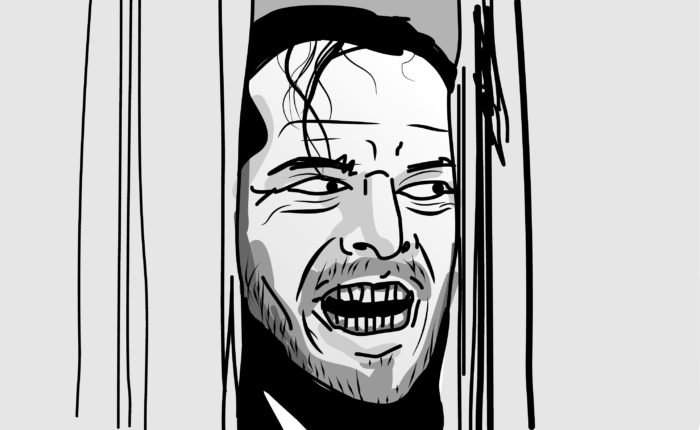Conference
How COVID further complicates grief
Workshop 1: Past losses and attachment styles all affect how we process grief in the pandemic.
Spring 2021

Margo Cole attended Dr Arun Mansukhani’s workshop on modifications to implementing the Standard Protocol with complex clients in whom multiple affective systems may be activated at the same time.
At the 2019 conference in Birmingham, clinical psychologist and sexologist Arun Mansukhani raised the issue of how best to work with clients with complex issues in which multiple affective behaviour systems are interacting. This year he explained more about how EMDR practice is affected by working with this complex client group, in whom these other systems may be impacting on their interactions with the therapist.
The role of the body’s defence system in trauma is well understood; Mansukhani contends, quoting authors such as Panksepp and Hoffman, that other affective and behaviour systems can also be deregulated, sensitised and traumatised. “The Defence System is very old from an evolutionary perspective,” he says. “As we evolved, and our behaviour became more complex, the system diversified into different but interrelated systems.”
Included in these, he says, are the Attachment, Social Ranking, Sexual and Pleasure/Seeking systems, of which Attachment is the most recognised and best understood from a trauma perspective. Like the Defence System, the Attachment System can be in homeostasis, hyperactivated or hypo-activated, and it provokes similar activation patterns in the central nervous system and autonomous nervous system as the Defence System.

Mansukhani says that the Defence, Attachment and Social Ranking systems are all activated by fear: fear of being attacked and killed (Defence), fear of being uncared for and neglected (Attachment) and fear of being humiliated and expelled, being powerless, of losing our position, or not being valued (Social Ranking). While the other two systems – sexual and pleasure/seeking – are not motivated by fear, they can still be sensitised and either chronically hyper- or hypo-activated. Moreover, the pleasure-seeking system can become hyperactivated through decompensation of the other systems.
In many clients, two or more of these systems may be interacting, as Mansukhani says: “We see clear indications of sexual systems enmeshed with attachment or with social ranking. Many sexual offences actually have more to do with dominance than sexual pleasure, and dominance is related to the social ranking system.”
This presents a challenge for EMDR therapists, says Mansukhani. A key element in the effectiveness of EMDR therapy is dual attention: the client’s ability to be aware simultaneously of present safety, positive personal qualities, and strengths, while accessing disturbing traumatic memory material. “The client has to be capable of being in a state where they can connect with their emotions, but also know that they are in the present and have a good part of their cognitive capacity.” he explains.
“People with complex challenges – more than one system – find it difficult to stay in that zone; they may go hyper or hypo, or they may stay in the safe zone and not move out if it – so they don’t go anywhere near the boundaries where they start feeling and connecting with disturbing materials. They won’t have any meaningful therapeutic change if they stay in any of these zones.”
There may be many reasons why a client with complex issues is not able to stay in the dual focus zone: they may not relate their current difficulties to past events, may have memories that are totally or partially dissociated, and/or their present stress may deregulate the variouis behaviour and affective systems, making it very difficult to access and process past memories.
This will impact on a therapist’s ability to undertake the standard 8-phase EMDR protocol, as Phase 1 – History taking – may be impossible. “If they can’t talk about the past, you can’t start Phase 1,” says Mansukhani.
The solution, he says, is to start at Phase 2 (Preparation). “It doesn’t mean you’re not assessing, just because you can’t do a standard Phase 1 history taking” he explains. “You are assessing the present, their regulation capacities, where they find it difficult to connect with the past, where they activate defensive mechanisms, all of which can tell you a lot about past situations and how they dealt with them.”
Mansukhani says Phase 2 is the most important phase in this type of case, because this is where the therapeutic relationship is established and it is possible to help the client to acquire the abilities and reach the state necessary to maintain dual focus while accessing disturbing material; the client can begin to understand how past issues are related to current difficulties. But it is also where the therapist’s own attachment system may be activated: “As therapists, when we put ourselves in front of someone and have this level of intimate relationship, it is important that we have looked at our own history so that we are aware that whatever’s coming up has more to do with the client than ourselves,” he says.
In general, the aims of Phase 2 are to achieve stability, security and understanding, making it possible to start exploring the client’s history and trauma. But Mansukhani says these objectives are seldom met in complex cases, either because the client is destabilised and highly symptomatic when they arrive; or they destabilise when they start talking about their past; or because they are extremely stable but disconnected, and greatly fear destabilising. He says all these groups will require Phase 2 interventions, both external (such as self-care and energy-level regulation) and internal (safe/calm place, self-compassion etc.) in order to start being able to explore the past.
“Self-care and self-knowledge will lead to self-acceptance and, eventually, self-compassion, which will help later with processing of past events,” he explains.
While Phase 2 is likely to be the first phase when working with clients with complex issues, it will also overlap with the other phases. Once certain levels of stabilisation and security have been established, it will be possible to start Phase 1, in the form of co-creation of life history, while continuing with Phase 2 interventions and start processing (initially not complete targets).
Mansukhani says that, before a client can begin to process trauma memories, they have to be integrated into a life history, which has usually not happened because the client has felt overwhelmed when they think about them. As a result, they have avoided the trauma memories by activating their defence mechanisms – for example dominance or avoidance. He advocates working with these defences by relabelling them as “interpersonal strategies” and helping the client to understand more about them and the function and cost of using them.
“They won’t present the [traumatic] material – they’ll present the defence, so you can work with this,” he says. “The cost of the defensive strategy is frequently directly related to the initial wound or trauma. Understanding this will help clients connect with their past and allow us to work with those memories.”
As with all client groups, the aim of the therapy is to help the client become regulated enough and sufficiently in touch with the events in their life history to process them. What hinders or prevents processing is the client’s difficulty in staying in dual focus – something that this group finds particularly challenging. “It is very important that we help the client to expose themselves to manageable bits of disturbance and go back into regulation, so they start feeling confident about their capacity to handle traumatic memory processing”, he says. “This will also strengthen the confidence in the therapist and therapeutic bond, and this is very important in these complex cases.”
Other interventions that can be used are the installation of the inner adult self or working with present relational difficulties (with couples, children, etc) all of which can help the client to understand how present difficulties are related to activation of past traumatic memories, making it eventually easier to work with them.
For more information, see Dr Mansukhani’s paper “Trauma, attachment and affective behaviour systems: Implications for EMDR therapy” in EMDR Therapy Quarterly, Spring 2019 Vol. 1 No. 1.

Conference
Workshop 1: Past losses and attachment styles all affect how we process grief in the pandemic.